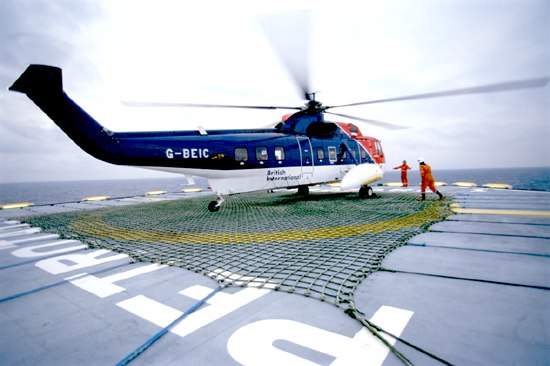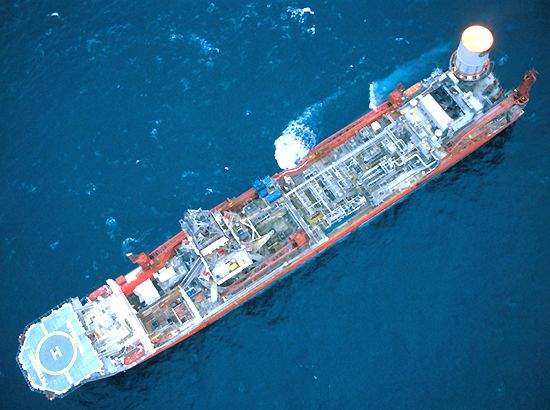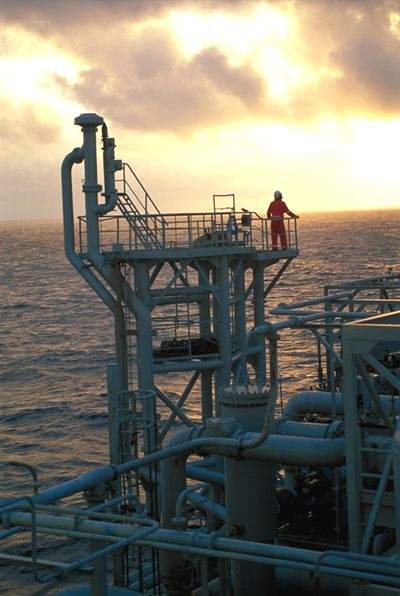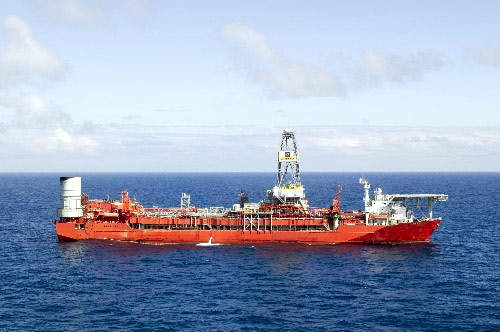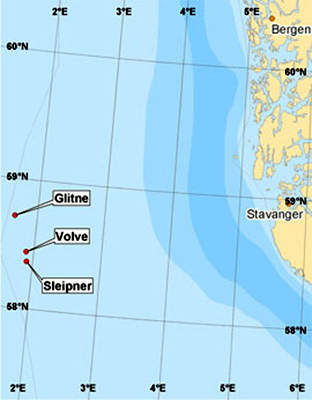Glitne lies in blocks 15/5 and 15/6 in the Sleipner area of the Norwegian sector of the North Sea, about 40km north-west of the Sleipner East development. The oil field was brought onstream in August 2001 with a peak production rate of 40,000 barrels of oil. A total of NKr700m ($90m) was invested in the development of the field.
The production licence for the development, 048, was awarded to Statoil in 1977. The field is owned by Statoil (58.9%), Total E&P Norge (21.8%), Det Norske Oljeselskap (10%) and Faroe Petroleum Norge (9.3%).
The field was originally expected to have a production life of two to three years, depending on the economics of oil price trends. A combination of process and well measures, and in-fill drilling extended the life of the field. Production in the second full year of operation (2003) amounted to 10.6 million barrels or approximately 29,000 barrels per day, which was 12% more than the expected production total for the year.
Planned closure
In October 2012, Statoil announced its plans to shut down the field. The decision was taken after drilling of the last well, 15/5-A-7 AH, in May 2012 proved production to be no longer feasible. During its 12 years of production life, Glitne has produced a total of 55 million barrels of oil which is more than double the original estimate.
A six-month notice period has been served to Teekay for removal of Petrojarl 1 FPSO. A total of six producers and a water injection well will be plugged for successful closure of the field.
Geology and reserves
Glitne, at a water depth of 110m (361ft), is a Palaeocene reservoir with a gas / oil ratio of 50m³:m³. The reservoir consists of several separate sand sheets of deep-marine fan deposits in the upper Heimdal formation.
The reservoir is estimated to contain 25 million barrels of recoverable oil
Drilling
The field was discovered in 1955 with well 15/5-5 and it was appraised by well 15/5-6 in 1997. Well 15/5-3 determined the edge of the field and found the oil / water contact.
Production wells 15/6-A-2 H, 15/6-A-2 AH, 15/6-A-3 H were drilled in 2000. Four more wells, including a water injection well, were drilled in 2001. New wells were drilled in 2004, 2005 and 2007.
In August 2007 the Norwegian Petroleum Safety Authority approved Statoil’s new plan to deploy the Ocean Vanguard on the Glitne Field development in the North Sea. This semi-submersible rig drilled and completed the oil producer, 15/5-A-7-H, in September 2007. The well was part of an ongoing campaign to improve recovery from the field, and to extend its productive life-span.
Development
In June 2000, Petroleum Geo-Services entered into an agreement with Statoil to produce the Glitne field until 2005. This was later extended so that the field would be in operation until late 2007. PGS have produced this field with its floating production, storage and offloading (FPSO) vessel, Petrojarl 1, owned by Teekay Petrojarl Production ASA.
PETROJARL 1
Petrojarl 1, a Tentech 685 turret-moored FPSO, was built in 1986 in the NKK shipyard. It is a Norwegian-flagged vessel, with the DNV classification DNV+AI mobile offshore unit. It was designed by Golar Nor and features a non-disconnectable internal turret secured by eight anchor legs.
Oil is transferred by a passive single-path swivel. The wells are connected to the Petrojarl 1 with a total of seven flexible risers (the ship has reception slots to accommodate eight risers). Control systems include a Simrad positioning system and an Allan Bradley automation system.
The FPSO has an overall length of 209m and a breadth of 32m. The vessel depth is 18m and the maximum draught is 13m. Its tonnage is 31,473dwt and it has a transit speed of 10kt.
It is powered by two dual-fuel boilers connected to four 2.8MW dual-fuel turbines. There are also two 1.5MW diesel engines. The FPSO is propelled by twin propellers.
It has 68 berths and an operating crew of 43 (36 regular PGS production crew and one representative of Statoil). There are also three cranes with a ranting of 30t and 20m.
The FPSO has a maximum oil-production rate of 45,000bpd and a maximum gas-production rate of 30mcft/d. It can flare a full 30mcft/d, if necessary.
It has gas compression facilities of 20mcft/d and can treat 32,000 barrels of water a day in hydrocyclones, with a maximum oil discharge of 40ppm. From early 2003 water was reinjected into the reservoir using ship facilities. Waste from the platform is shipped to the Statoil Dusavik shore base for treatment and disposal.
Petrojarl 1 can store 188,000 barrels of crude oil in its tanks and its slop tanks have a capacity of 7,000 barrels.The tanker Petroskald ships the production from the FPSO every fifth day usually to the ports of Rotterdam of Kalundborg.
The mooring system consists of eight 3.3in chains and each line is linked to a 15t Stevpris anchor. There are also two 1,600kW thrusters aft and two 1,600kW thrusters fore.
SUBSEA
The five subsea wells use Christmas trees that were first used in the Tommeliten field. These were removed and refurbished and then installed as single satellite wells within 80m-100m of each other.
The project has also involved an upgrading of the gas and water-injection system on-board the FSPO. Gas is injected into one of the water-injection wells (now a gas injection well) to obviate flaring.


